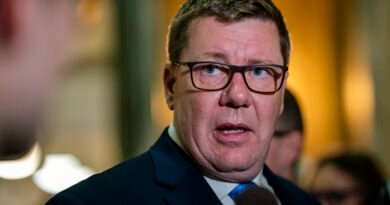Opposition Investigates Government’s Economic Management Following US Interest Rate Cuts
Finance Minister Katy Gallagher emphasizes that Australia’s interest rate still remains lower than that of the United States, even following the recent rate cut.
The Senate felt the effects of the United States Federal Reserve’s decision to reduce interest rates, with the opposition seeking clarification from the government on its inflation management strategy.
During the Senate session, Liberal Party Senator Jane Hume questioned Finance Minister Katy Gallagher about Australia’s lack of action in addressing inflation, leading to elevated interest rates.
Hume pointed out that Australia’s core inflation remains higher than that of comparable economies such as the United States, the UK, and Canada. She noted that these countries have already started reducing their interest rates after successfully lowering inflation.
Gallagher responded by stating that inflation had peaked when the Labor government first took office. She also mentioned that Australia’s interest rates had halved since reaching their peak in 2022.
“Moreover, our rates are still below those of the U.S., even after the recent rate cut,” added Gallagher.
On Sept. 18, the U.S. Federal Reserve took the step of reducing interest rates by half a percentage point. The Federal Open Market Committee decided, following a two-day meeting in Washington, to lower its key lending rate to a range between 4.75 and 5 percent.
Not just the U.S., but approximately ten major central banks, including those of Canada, the UK, the EU, and New Zealand, have been gradually reducing their official interest rates since the previous year.
Gallagher stressed the importance of presenting a complete picture when utilizing international comparisons for political purposes. She highlighted that inflation in the U.S. peaked higher and later compared to Australia.
“Interest rates in the U.S. were higher than they ever were here. Currently at 4.3 percent, in the U.S., they exceeded 5 percent. Let’s be transparent and honest while making these international comparisons,” said Gallagher.
Reserve Bank of Australia (RBA) Governor Michele Bullock stated on Sept. 5 that despite a decrease in inflation, it was premature to consider rate cuts. She mentioned that monetary policy would need to remain restrictive until confidence was established that inflation was heading towards its target range sustainably.
Hume also raised concerns about newly released Australian Bureau of Statistics (ABS) data indicating an 8.7 percent decline in real disposable income in Australia since the Albanese Labor government took office.
“This outcome is worse than in comparable nations, given your repeated argument that Australia experienced lower and delayed interest rate peaks,” Hume added.
Household Challenges
Gallagher recognized the challenges faced by households due to inflation, emphasizing that this was a global issue affecting Australia as well as other countries.
The opposition queried about when Australian households could expect a recovery in their disposable incomes.
In defense, Gallagher supported the government’s support measures, indicating that households were receiving more assistance compared to what they would have under the Coalition’s economic strategies.
“Our economic plan is centered on addressing the inflation challenge, supporting households, creating jobs, and reviving wage growth. Meanwhile, your economic plan involves cutting $315 billion from Commonwealth spending at a time when the economy is barely growing,” Gallagher remarked.
Based on ABS data, she highlighted that the economic strategy of the Albanese Labor government had generated close to one million jobs.
“Additionally, we have achieved record-high workforce participation and reduced the gender pay gap to a historic low. Inflation in Australia is being contained,” Gallagher concluded.





